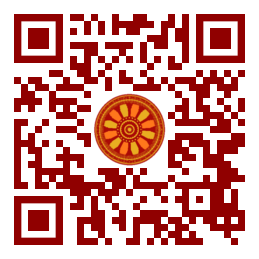
:: International Transaction Journal of Engineering, Management, & Applied Sciences & Technologies
http://TuEngr.com

ISSN 2228-9860
eISSN 1906-9642
CODEN: ITJEA8
FEATURE PEER-REVIEWED ARTICLE
Vol.13(3)(2022) |
Virucidal Activity of Different Disinfectants Against the African Swine Fever Virus
 Alexey Igolkin (Federal State-Financed Institution "Federal Centre for Animal Health", Vladimir, RUSSIA),
Alexey Igolkin (Federal State-Financed Institution "Federal Centre for Animal Health", Vladimir, RUSSIA),
Vladimir Kuzmin, Vladislav Veretennikov, Dilyara Botalova (Department of Epizootiology named after Urbana V.P., Saint-Petersburg State University of Veterinary Medicine, Saint Petersburg, RUSSIA),
Alexander Kasatkin ( Dezon LLC, Moscow, RUSSIA).
Disciplinary: Veterinary Sciences.
doi: 10.14456/ITJEMAST.2022.58
Keywords: African swine fever (ASF); ASF pathogen, Disinfection, Quarantine, Hemadsorbing cells, virulence; Virucidal effect
AbstractThe high contagiousness of African swine fever (ASF) is largely due to the biological characteristics of the pathogen, namely the virulence of the DNA containing virus from the Asfarviridae family and its resistance in the external environment. Despite the safety of the ASF virus for humans, its social significance is undeniable. In and around the hotbed of infection, following the current legislation, the destruction of all pigs is carried out. At the moment, there are no etiotropic measures to combat ASF. Therefore, special attention should be paid to preventive measures, quarantine and disinfection. However, the surfaces of objects contaminated with the ASF virus are often not thoroughly decontaminated due to organic matter contaminants that protect the virus from external factors. Therefore, the choice of high quality disinfectants with a virucidal effect against the ASF pathogen is relevantPaper ID: 13A3P
Cite this article:
Igolkin, A., Kuzmin, V., Veretennikov, V., Botalova, D., and Kasatkin, A. (2022). Virucidal Activity of Different Disinfectants Against the African Swine Fever Virus. International Transaction Journal of Engineering, Management, & Applied Sciences & Technologies, 13(3), 13A3P, 1-8. http://TUENGR.COM/V13/13A3P.pdf DOI: 10.14456/ITJEMAST.2022.58
References
- Blome, S., Franzke, K. and Beer, M., 2020. African swine fever-A review of current knowledge. Virus research, 287, p.198099. DOI: 10.1016/j.virusres.2020.198099
- Chapman DAG, Tcherepanov V, Upton C, Dixon LK, 2008. Comparison of the genome sequences of non-pathogenic and pathogenic African swine fever virus isolates. Journal of General Virology 89(2): 397-408.
- Costard S, MurL, Lubroth J, Sanchez-Vizcaino JM, Pfeiffer DU, 2013. Epidemiology of African swine fever virus. Virus Research 173(1): 191-197. DOI: 10.1016/j.virusres.2012.10.030
- Das S, et al. (2021). African swine fever: Etiology, epidemiology, control strategies and progress toward vaccine development: A comprehensive review. Journal of Entomology and Zoology Studies 9(1): 919-929.Link
- Dixon LK, Stahl K, Jori F, Vial L, Pfeiffer DiU, 2020. African Swine Fever Epidemiology and Control. Annual Review of Animal Biosciences8:221-246. DOI: 10.1146/annurev-animal-021419-083741
- Gogin A, Gerasimov V, Malogolovkin A, Kolbasov D, 2013. African swine fever in the North Caucasus region and the Russian Federation in years 2007-2012. Virus Research, 173(1): 198-203.
- Granberg F, Torresi C, Oggiano A, Malmberg M, Iscaro C, De Mia GM, Belak S, 2016. Complete genome sequence of an African swine fever virus isolate from Sardinia, Italy. Genome Announcements 4(6): e01220-16. DOI: 10.1128/genomeA.01220-16
- Lebedev NV, Igolkin AS, Gruzdev KN, 2021. OIE and FAO join forces to counter ASF. Veterinary Science Today 1(36): 72-76. DOI: 10.29326/2304-196x-2021-1-36-72-76
- Luo YZ, Sun Y, Wang T, Qiu HJ, 2018. African swine fever: A major threat to the Chinese swine industry. Scientia Agricultura Sinica 51(21): 16.DOI: 10.3864/j.issn.0578-1752.2018.21.016
- Mazur-Panasiuk N, Antas M, Fila M, Zmudzki J, Wozniakowski G, Szczotka-Bochniarz A, 2021. Feed as a mechanical vector in the transmission of swine viral diseases. Medycyna Weterynaryjna77(11): 525-529. DOI: 10.21521/mw.6587
- Melnik NV, Magurin VI, Sorokin Nyu, Shchelochinin SA, 2012. Preparation for disinfection of veterinary supervision facilities. Worldwide applicationsRU2011127670/15A events. 1-6. Link
- OIE (World Organisation for Animal Health). (2019). World Animal Health Information Database (WAHIS). https://www.oie.int/en/home/
- Petrini S, Feliziani F, Casciari C, Giammarioli M, Torresi C, De Mia GM, 2019. Survival of African swine fever virus (ASFV) in various traditional Italian dry-cured meat products. Preventive Veterinary Medicine 162(1): 126-130. DOI: 10.1016/j.prevetmed.2018.11.013
- Subedi D, Bhandari S, Pantha S, Poudel U, Jyoti S, Kandel M, Dhakal S, 2021. Epidemiology of African Swine Fever and Its Risk in Nepal. Microbiology Research 12(3): 580-590. DOI: 10.3390/microbiolres12030041
- Sun E, et al. (2021). Emergence and prevalence of naturally occurring lower virulent African swine fever viruses in domestic pigs in China in 2020. Science China Life Sciences 64(5): 752-765.
- Tao D, Sun D, Liu Y, Wei S, Yang Z, An T, Liu J, 2020. One year of African swine fever outbreak in China. Acta Tropica, 211: 105602. DOI: 10.1016/j.actatropica.2020.105602
- Wang Y, Gao L, Li Y, Xu Q, Yang H, Shen C, Huang B, 2019. African swine fever in China: Emergence and control. Journal of Biosafety and Biosecurity 1(1): 7-8. DOI: 10.1016/j.jobb.2019.01.006
- Zhou X, Li N, Luo Y, Liu Y, Miao F, ChenT, Hu R, 2018. Emergence of African Swine Fever in China, 2018. Transboundary and Emerging Diseases 65(6): 1482-1484. DOI: 10.1111/tbed.12989
Other issues:
Vol.13(3)(2022)
Vol.13(2)(2022)
Vol.13(1)(2022)
Archives
Call-for-Papers
Call-for-Scientific PapersCall-for-Research Papers: ITJEMAST invites you to submit high quality papers for full peer-review and possible publication in areas pertaining engineering, science, management and technology, especially interdisciplinary/cross-disciplinary/multidisciplinary subjects.
To publish your work in the next available issue, your manuscripts together with copyright transfer document signed by all authors can be submitted via email to Editor @ TuEngr.com (no space between). (please see all detail from Instructions for Authors)
Publication and peer-reviewed process:
After the peer-review process (4-10 weeks), articles will be on-line published in the available next issue. However, the International Transaction Journal of Engineering, Management, & Applied Sciences & Technologies cannot guarantee the exact publication time as the process may take longer time, subject to peer-review approval and adjustment of the submitted articles.